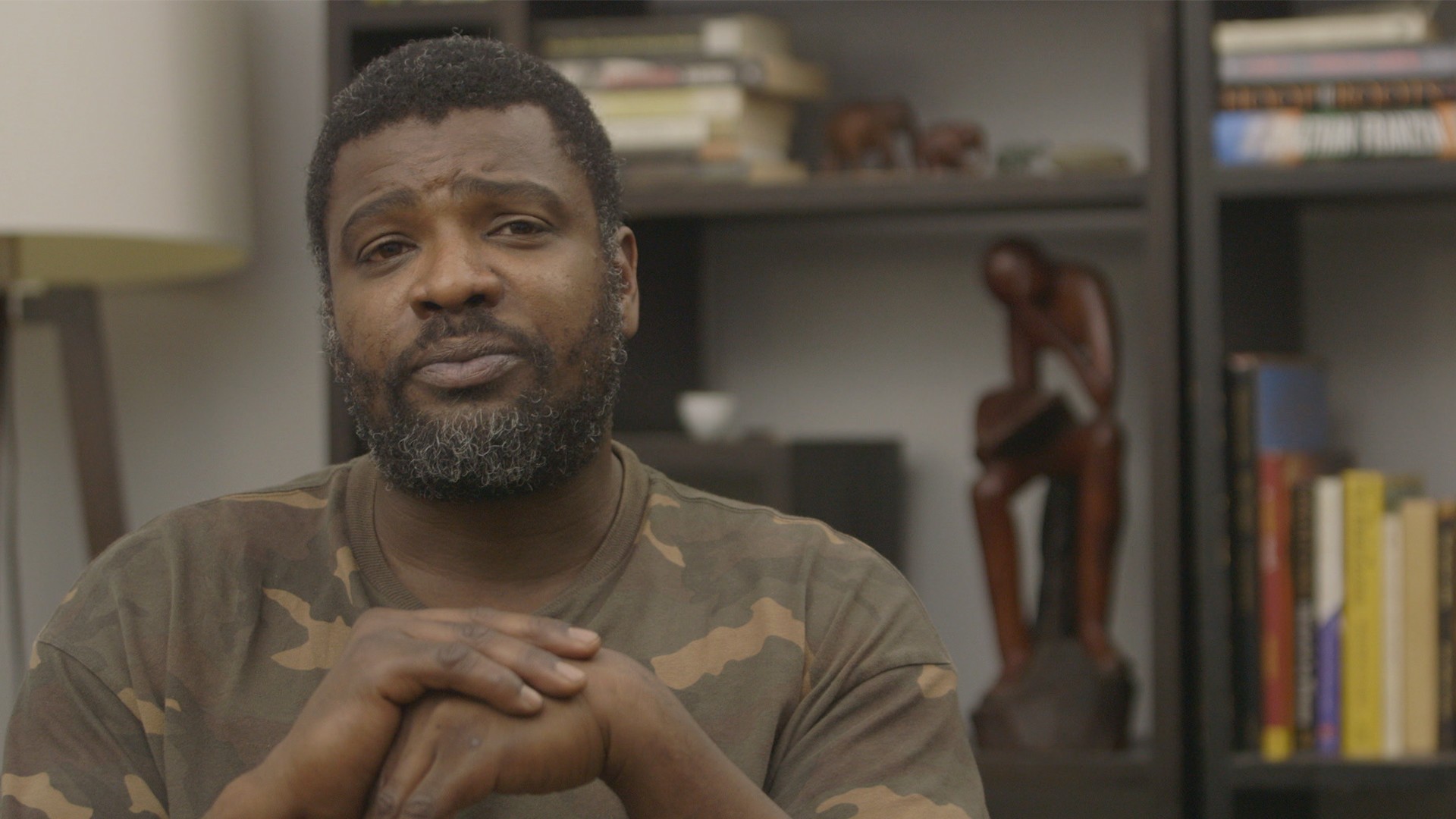While working at the New York City Department of Correction in the mid 1990s, part of my job as deputy commissioner for programs consisted of visiting the various jails on Rikers Island. I would often go weeks without seeing the same facility twice, so I was struck by the number of incarcerated men, women, and teenagers I recognized and spoke with over and over again. That observation and those interactions were my first window into understanding the disruptive impact incarceration has on the lives of people across America.In the popular imagination, jail is often thought of as a temporary and relatively harmless holding facility where people spend a brief amount of time before their cases are resolved in local courts. In reality, it is all too often a quagmire of indefinite detention where marginalized individuals linger because their friends and family can't afford bail. And when they are eventually released, many find they have lost their jobs due to employers who cannot or will not await the outcomes of court cases.Today, as the director of the Center on Sentencing and Corrections at the Vera Institute of Justice, I am working to advance criminal justice reform nationally by working directly with state and local agencies to reduce the flow of people into the system as well as improving the conditions of confinement, with a focus on human dignity and preparing individuals to succeed when they return to their communities.But back when I was helping to develop educational, substance abuse, and employment-training programs on Rikers, it was a challenge to get them off the ground. Budget officials and others I worked with argued against investing in programming out of the misguided belief that people aren't there long enough to actually benefit from such initiatives.That belief likely stemmed from the somewhat misleading existing data on the average length of stay in the jail, which seemed to mask what I was seeing with my own eyes—that many pre-trial individuals were on Rikers for lengthy periods of time. While it's true that the average length of stay in NYC jails is about 55 days, the number is misleading because it includes people discharged on the same day. An incarcerated person who stays overnight typically spends an average of 176 days in a cell, according to testimony from the DOC commissioner, Joseph Ponte, last year.These findings have served as ammunition in garnering the support for and implementing a range of programs on Rikers, often in partnership with community-based organizations from the same neighborhoods participants once called home. While providing quality programs in jails is in no way a substitute for addressing significant issues, such as the use of money bail, unduly long case processing times, and general over-incarceration, that experience instilled in me a belief that incarceration should prepare people to succeed when they get back home.Still, in order to successfully lobby for and make those changes, we need a better understanding of what is happening inside America's more than 5,100 jails and prisons, starting with a deeper look at the lengths of stay.The appetite for reform today is the greatest I've seen in my 25 years working in criminal justice, and that appetite won't dissipate following the recent election results, despite the campaign's law-and-order rhetoric. The fact that our prison system has grown too big is almost universally acknowledged, and lawmakers and advocates from across the political spectrum have been calling to dramatically decrease the number of people we lock up. Importantly, in the last couple of years, reform efforts have begun to focus on the overuse and misuse of local jails, a key area in understanding and addressing mass incarceration.If these efforts to implement reforms—such as ending the over-policing of minor offenses, increasing diversion opportunities, improving conditions behind bars, and easing reentry—are successful, and we are able to return to the incarceration rates of several decades ago (about one-seventh of our current rate), many prisons and jails will close. But what should the ones that remain look like? Why do we send people there? We need to look at these questions with fresh eyes. Without answering them, any de-carceration efforts will be incomplete.One essential aspect to rethink is the disconnect between correctional institutions and communities. Nearly half of all prisons in America were built between 1986 and 2006, during the incarceration boom of the 80s and 90s. And they were built largely in small, rural towns that could accommodate them physically and benefit from them economically. When people are sentenced to prison, keeping them connected to their families is not considered a priority, and many end up serving their time hundreds of miles away from home, despite research showing that those who receive regular visits are less likely to reoffend. This isolation is not only a punishment for incarcerated individuals, but also their families, who shoulder the burden of often expensive and difficult travel. Furthermore, these towns often don't have community-based programs that can provide rehabilitation services.But the relationship between correctional institutions and communities isn't just about geographic distance. Even when they are within the communities they serve, local jails can still be almost impossible to access. Rikers, which is inside New York City yet extremely remote to all five boroughs, is a good example. And many jails have harmful policies like limited visiting hours or replacing in-person visitation with video, which can make incarcerated people feel more cut-off from family and society than necessary.
Watch Kingsley Rowe talk about his journey from incarceration on a murder charge to being a professional criminal justice advocate.
These physical and logistical barriers to correctional facilities help create an "out-of-sight, out-of-mind" mentality in larger society. Prisons and jails, even those in our own backyards, remain largely unknown to people whose lives have not been touched directly by incarceration. To those who have not experienced jail—or even to those who have but could afford bail—it makes sense to think of jail as a short-term problem. That's simply not the case for many Americans, and the problems that started with their arrest extend beyond cellblocks into the hurdles they face in finding employment and a stigma that perpetuates their isolation. As recidivism rates show, these issues are working to fuel incarceration, not improve our communities.If we were to rebuild our criminal justice system from scratch, what would we want the goal of incarceration to be? And what would that mean for the relationship between facilities and communities? We're asking those questions now as part of Vera's Reimagining Prison initiative, which is developing a new vision for incarceration in the United States, one that situates human dignity at its philosophical and operational core. To do so, we're looking at promising practices—including international examples—that create safe and humane prisons and jails, and seeking input from a wide range of justice system stakeholders, people who have been incarcerated, and the general public. As part of this initiative, Vera organized the first ever National Prison Visiting Week this past month by partnering with state corrections agencies and local jurisdictions, as well as the Federal Bureau of Prisons, to open up prisons and jails in 17 geographically and politically diverse states. By bringing ordinary citizens into the mix, many of whom have never been inside a cell, we aim to increase the visibility of the problem, create awareness of conditions of confinement, and encourage transparency in a new era of incarceration.Shifting the culture of incarceration from one that prioritizes retribution and isolation to one that prepares people for success on return—including maintaining their connections to their community—is a philosophically novel approach. But this transformation will require a substantial culture change for all Americans, not just those working on the front lines of reform. A reimagined incarceration system in the United States not only means a drastically smaller footprint, but one in which transparency, proximity, accountability, and community engagement are some of its key hallmarks.If we are serious about ending mass incarceration and closing some of the thousands of prisons and jails America has built in the past few decades, we first need to open their doors and begin to think of them as part of our communities.
Advertisement
Advertisement
Advertisement
Advertisement
Watch Kingsley Rowe talk about his journey from incarceration on a murder charge to being a professional criminal justice advocate.

These physical and logistical barriers to correctional facilities help create an "out-of-sight, out-of-mind" mentality in larger society. Prisons and jails, even those in our own backyards, remain largely unknown to people whose lives have not been touched directly by incarceration. To those who have not experienced jail—or even to those who have but could afford bail—it makes sense to think of jail as a short-term problem. That's simply not the case for many Americans, and the problems that started with their arrest extend beyond cellblocks into the hurdles they face in finding employment and a stigma that perpetuates their isolation. As recidivism rates show, these issues are working to fuel incarceration, not improve our communities.If we were to rebuild our criminal justice system from scratch, what would we want the goal of incarceration to be? And what would that mean for the relationship between facilities and communities? We're asking those questions now as part of Vera's Reimagining Prison initiative, which is developing a new vision for incarceration in the United States, one that situates human dignity at its philosophical and operational core. To do so, we're looking at promising practices—including international examples—that create safe and humane prisons and jails, and seeking input from a wide range of justice system stakeholders, people who have been incarcerated, and the general public. As part of this initiative, Vera organized the first ever National Prison Visiting Week this past month by partnering with state corrections agencies and local jurisdictions, as well as the Federal Bureau of Prisons, to open up prisons and jails in 17 geographically and politically diverse states. By bringing ordinary citizens into the mix, many of whom have never been inside a cell, we aim to increase the visibility of the problem, create awareness of conditions of confinement, and encourage transparency in a new era of incarceration.Shifting the culture of incarceration from one that prioritizes retribution and isolation to one that prepares people for success on return—including maintaining their connections to their community—is a philosophically novel approach. But this transformation will require a substantial culture change for all Americans, not just those working on the front lines of reform. A reimagined incarceration system in the United States not only means a drastically smaller footprint, but one in which transparency, proximity, accountability, and community engagement are some of its key hallmarks.If we are serious about ending mass incarceration and closing some of the thousands of prisons and jails America has built in the past few decades, we first need to open their doors and begin to think of them as part of our communities.
